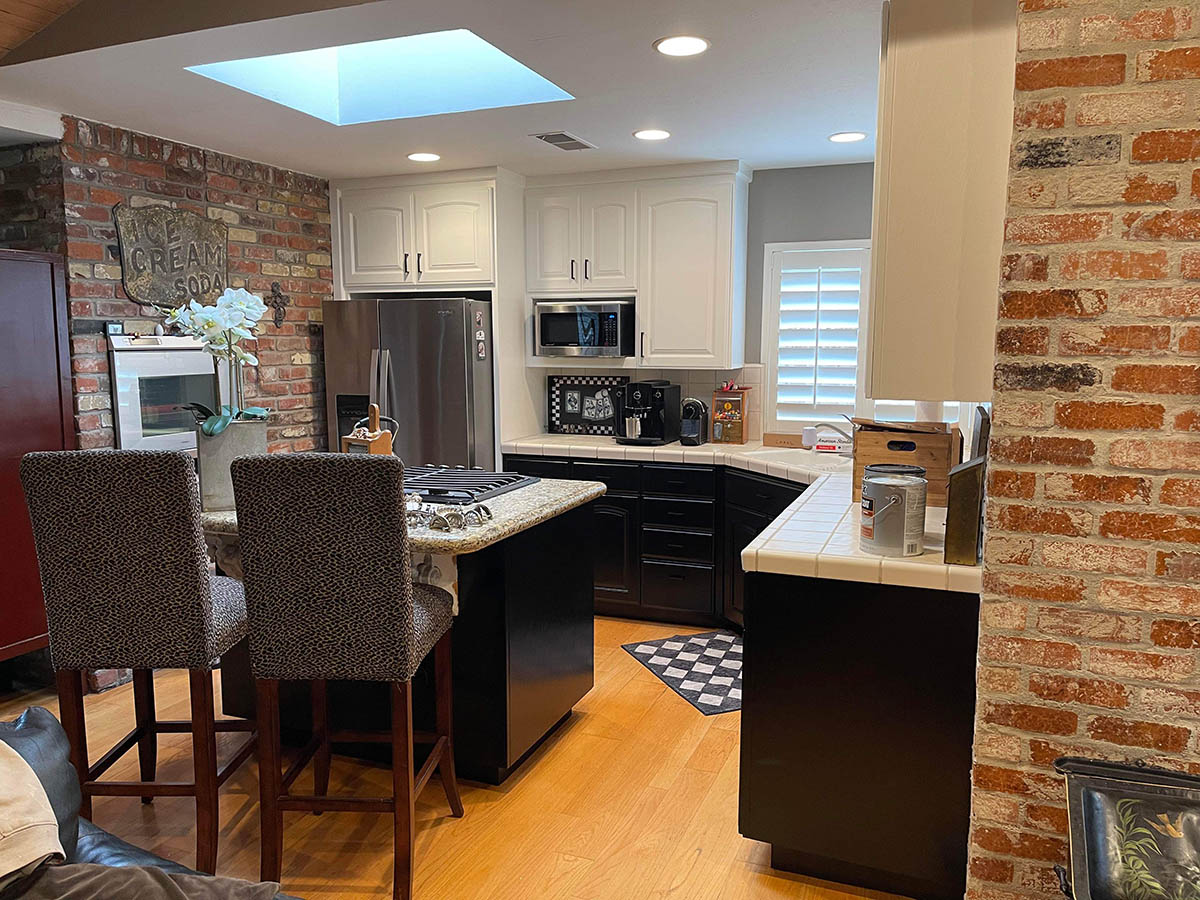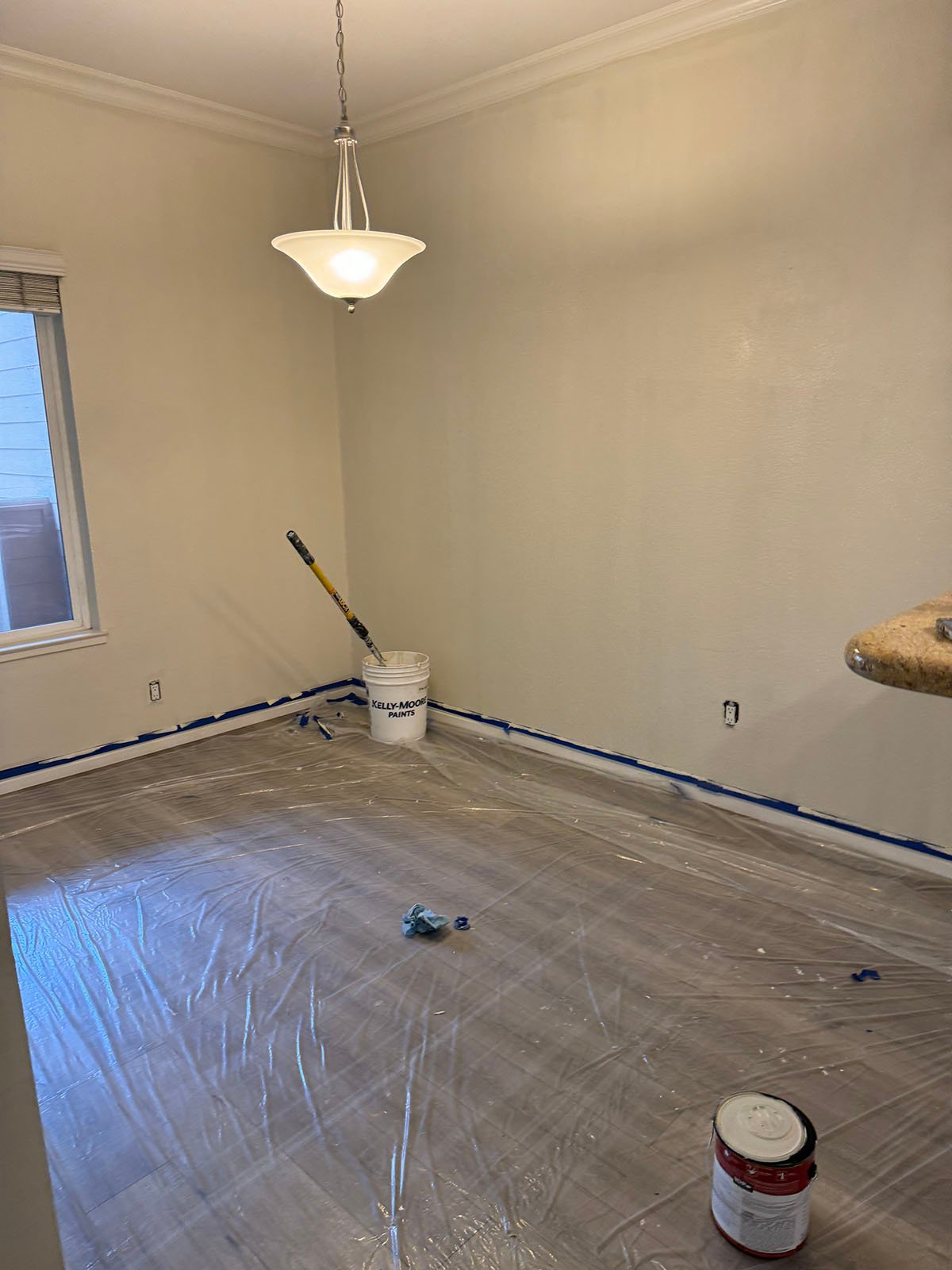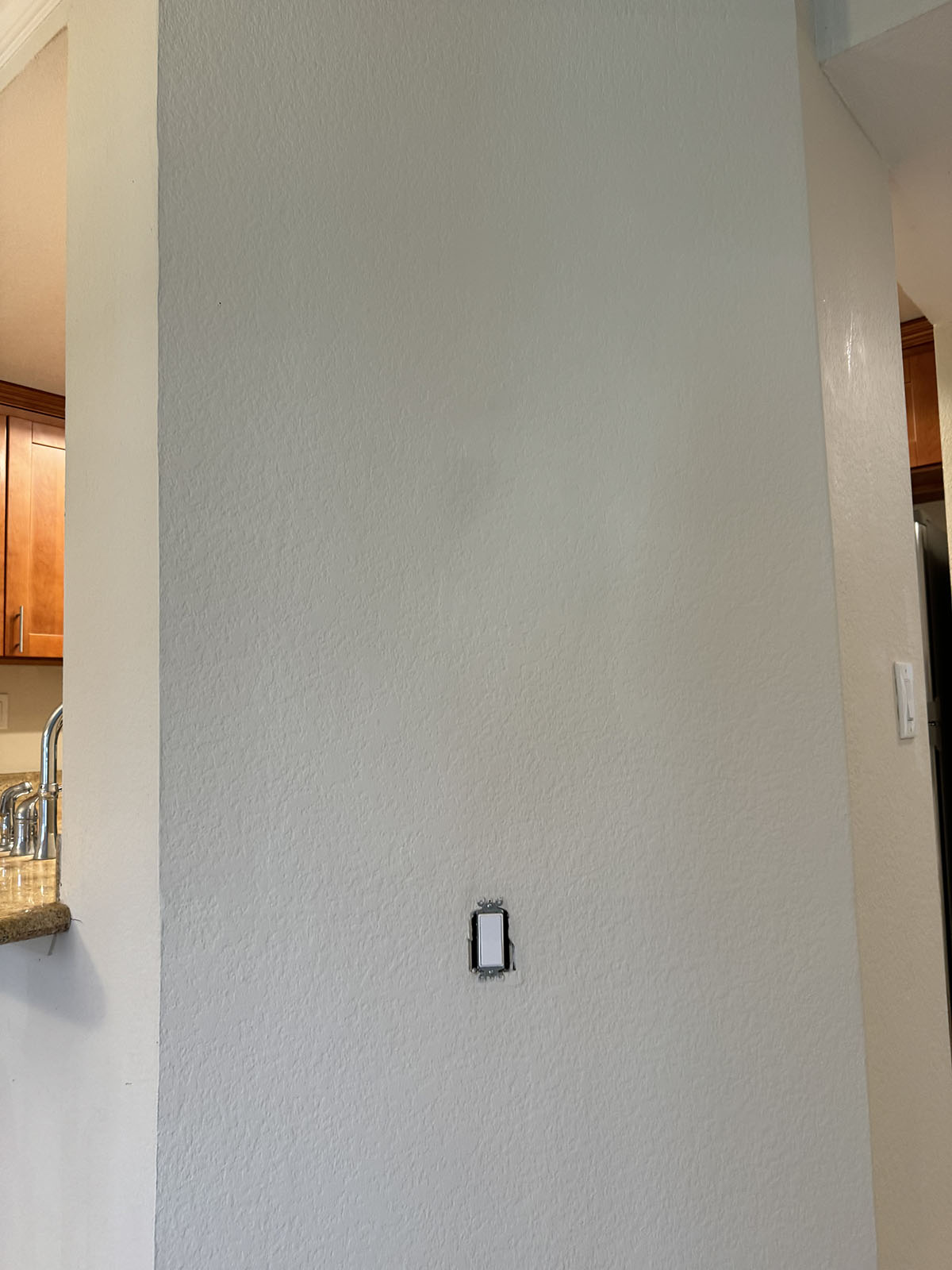
If you’re looking to update your kitchen or bathroom without a full remodel, painting your cabinets is one of the most affordable and transformative options available. But here’s where most homeowners mess up, they obsess over color, but ignore one detail that’s just as critical: what sheen do you paint cabinets?
That’s not a minor choice. It plays a critical role in determining the visual appeal, longevity, maintenance needs, and overall perceived quality of your cabinets. Choose wrong, and you’re dealing with peeling paint, visible flaws, and a finish that can’t survive daily use. Choose right, and you’ve got cabinets that look sharp, handle abuse, and boost your home’s appeal.
In this blog, you’ll learn everything you need to know about what sheen do you paint cabinets, from types of sheens to performance, appearance, and what works best in real-life homes. Let’s get into it.
Why Sheen Isn’t Just a Detail?
When you’re painting cabinets, your choice of sheen determines more than the look. It’s what keeps your cabinets looking good for the long haul. What sheen do you paint cabinets with if you want results that last? That depends on how much traffic they get, how much light is in the room, and what style you’re after.
What Is Sheen, Exactly?
Sheen is the level of gloss or shine in a paint finish. The higher the sheen, the shinier the surface, and the more light it reflects. Each level has its pros and cons. Here’s a breakdown:
- Flat/Matte: Zero shine, velvety finish, poor durability.
- Eggshell: Soft glow, more durable than flat, still not ideal for cabinets.
- Satin: Smooth, soft sheen, better durability.
- Semi-Gloss: Noticeable shine, great for kitchens and bathrooms.
- Gloss/High Gloss: Maximum shine, highly durable, modern-looking.
Understanding this gives you a better grip on what sheen do you paint cabinets with for specific spaces and needs.
The Top Sheens for Cabinets
When you’re deciding what sheen do you paint cabinets, it’s not about trendiness. It’s about choosing a sheen that balances appearance with practicality. Cabinets are high-contact surfaces. They get touched, bumped, wiped, splashed, and slammed. You need a finish that can take a beating and still look great.
The 3 Best Sheens for Cabinets
Let’s break them down.
1. Semi-Gloss – The Gold Standard
Semi-gloss is hands-down the most recommended option when it comes to painting cabinets.
- Durability: High
- Cleanability: Excellent
- Appearance: Clean, bright, polished
This sheen can withstand moisture, grease, and fingerprints. It’s reflective enough to give a crisp, finished look, but not so shiny that it reveals every imperfection. If you’re asking yourself what sheen do you paint cabinets for the best overall result, this is it.
2. Satin – A Softer Look with Solid Performance
If you prefer a more understated, less reflective surface, satin is your next best bet.
- Durability: Moderate to high
- Cleanability: Good
- Appearance: Soft, smooth, elegant
Satin works especially well for cabinets in lower-traffic areas or for homeowners aiming for a farmhouse or traditional style. It holds up pretty well but gives you a smoother, more relaxed look than high-gloss.
3. High Gloss – Bold, Reflective, and Ultra-Durable
High gloss is for the bold. It’s not for every kitchen, but when done right, it looks incredible.
- Durability: Top-tier
- Cleanability: Easiest to maintain
- Appearance: Sleek, contemporary, striking
The downside? It shows everything, every brush mark, dent, or speck of dust. So prep work must be flawless. If you want that luxury, ultra-modern look and aren’t afraid to go all-in, this might be your answer to what sheen do you paint cabinets for maximum wow factor.
Ready to Transform Your Space?
Don’t wait, your dream paint job is just a click away. Book your free estimate today!
How to Decide What Sheen to Paint Cabinets?
It’s not one-size-fits-all. Determining the appropriate paint sheen requires thoughtful consideration of daily usage, environmental conditions, and visual preferences. Here’s how to make the call.
Key Factors to Consider
1. Cabinet Location
Where the cabinets are installed makes a difference.
- Kitchen: Due to high levels of moisture, grease, and activity, kitchens benefit from resilient finishes such as semi-gloss or gloss.
- Bathroom: Bathrooms get steamy, so go with semi-gloss or gloss, they can handle the moisture without peeling.
- Living room or hallway built-ins: Satin works well here.
2. Frequency of Use
Ask yourself: are these cabinets used dozens of times a day, or do they mostly sit untouched? The more action they see, the tougher the finish you’ll need.
3. Lighting Conditions
Sheens react to lighting. If your space gets a ton of natural light, gloss might feel too reflective. In a dim room, it can actually help brighten the space.
4. Style of the Room
Modern and minimalist? High gloss fits right in. Traditional or rustic? Satin blends better. Classic transitional style? Semi-gloss all the way.
How to Apply Each Sheen Correctly?
Once you’ve figured out what sheen do you paint cabinets, execution is key. A good sheen applied poorly still leads to a bad result.
Satin Cabinet Painting Tips
Prep & Application Checklist
- Clean with degreaser.
- Lightly sand for adhesion.
- Prime with bonding primer.
- Apply with a fine roller or sprayer.
- Sand between coats.
Satin doesn’t forgive lazy prep, but it levels out nicely if applied carefully.
Semi-Gloss Cabinet Painting Tips
Prep & Application Checklist
- Clean surfaces thoroughly.
- Fill gaps or dings with wood filler.
- Use high-quality enamel or cabinet-grade paint.
- Apply 2–3 thin coats.
- Avoid over-brushing; let the paint self-level.
If you’re still asking what sheen do you paint cabinets and want the safest option, semi-gloss will give you pro-level results with the least headache.
High Gloss Cabinet Painting Tips
Prep & Application Checklist
- Smooth every surface meticulously.
- Sand between every coat.
- Spray, don’t brush, for glass-like finish.
- Let dry fully between layers.
- Avoid humid conditions.
Gloss is for those who don’t cut corners. But the payoff is a finish that looks custom-built.
Mistakes to Avoid When Choosing a Cabinet Sheen
Let’s make sure you don’t waste time, money, or effort. Avoid these rookie mistakes when deciding what sheen do you paint cabinets with.
The Big Errors Homeowners Make
1. Picking a Matte or Flat Finish
Flat paint may hide wall imperfections, but it has zero business on cabinets. It absorbs moisture and grime and is nearly impossible to clean.
2. Skipping the Primer
Every sheen needs a good primer, especially satin and gloss finishes. Neglecting this step compromises the integrity of the finish, often leading to peeling, cracking, and early degradation.
3. Ignoring the Prep Work
Want that flawless finish? You’ll need to clean, sand, fill, and prime. This is especially critical for gloss and semi-gloss. Don’t rush it.
4. Choosing Based on Wall Paint
There is a significant difference between wall paint and cabinet paint in terms of formulation, durability, and application. Just because eggshell works on your walls doesn’t mean it’s cut out for your cabinets.
Conclusion: What Sheen Do You Paint Cabinets for Long-Term Results?
Let’s close this out with the real answer to the question at the center of this post: what sheen do you paint cabinets for the best outcome?
If you want balance, choose semi-gloss, it’s the industry standard for a reason. It’s durable, looks polished, and stands up to real-world use.
If you prefer softer aesthetics and have lower-use cabinets, satin will serve you well.
If you’re aiming for a bold, dramatic look, and you’re willing to invest the time, high gloss delivers that mirror-like finish.
No matter which you choose, the right sheen, applied correctly, will give your cabinets a stunning, professional finish that looks high-end and holds up over time.
Now that you know what sheen do you paint cabinets, the next step is action. Don’t wait until your paint peels or your finish looks dull. Make the choice today that your future self will thank you for, because when it comes to cabinets, sheen isn’t just a detail. It’s a strategy.




